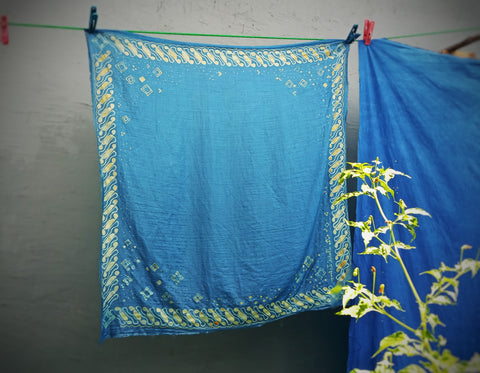Colours
Our piece lovingly uses natural dyes. Colours and patterns may vary from piece to piece, making each garment one of a kind
Colours variation tend to happen due to various reasons; water pH level, dye-bath temperature and timing while dyeing, natural dye materials harvested in different season. This reminds us that our pieces are made by human hands not machine and synthetic dyes.
Washing
Batik are considered as an art work, we recommend you to be cautious with the detergent you use for washing the batik
Use a pH neutral detergent as it will react minimally with the dyes. For delicate items, hand-washing are highly recommended. If you want to use the machine, make sure to wash in cold water, delicate settings, and put inside a laundry mesh bag.
Drying
Avoid prolonged sunlight exposure in order to prevent colour fading
Give a gentle rinse and try not to wring them as it will break the fibres. Instead you can ball them to squeeze the excess water and roll it flat on a towel. Spread it out to dry under windy and shady area. Iron with a low-medium heat with care to remove wrinkles.
What is Lerak?
In Indonesia, it is very common to wash batik using 'lerak'. The english names are soap nut / soap berry.
Lerak is widely used due to the natural pH of 6-7, an ideal range to maintain the colour on the batik cloth.
The shells of the soap nut contain a natural soap, called Saponin. When the nut shells absorb water, the saponin is released, which creates a soaping effect. Saponin is 100% natural and biodegradable, making it an excellent alternative to chemical detergents.
These environmentally friendly “nuts” are for those who want to avoid conventional detergents that contaminate our water supplies and are often harsh on the skin.
References
https://www.anerdgallery.com/batik-care/
https://www.farmersalmanac.com/what-the-heck-are-soap-nuts-24308
https://findingneverlandthemusical.com/ph-neutral-laundry-detergent/



